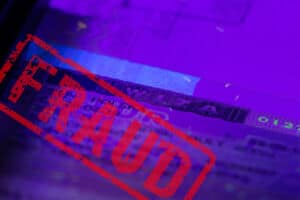02.09.2020 г.
Digital forgery prevention or document forgery detection
Why fake documents detection became so important
Nowadays we witness the ongoing services growth which has become possible to provide remotely due to the advancement of technology, providers in some cases face the need for remote client’s identity which is vital for on-boarding, processing travel documents and implementation of customer profile.
At the same time, while increasing the service level for clients, avoiding the necessity to visit the offices of service providers, remote identification brings with its risks relating to an easier way to obtain services by fraudsters using other people’s documents, fake documents, scans and photos of real documents, which were processed with the help of graphic editors, document images from the screens of pocket devices and desktop or laptop computers. Fast-growing deep fake technologies open up new opportunities for fraudsters relating to identity spoofing and force producers of remote document verification systems to be competitive and enhance anti-forgery features. Thus, document verification technologies used for user identification, both remotely and face-to-face, are becoming more and more sophisticated.

Actual protection methods
Document security is constantly being improved, passport/ID documents, driver’s license are becoming more and more technically complex. Various protection methods are applied to the documents, for example, the achievements of modern science in the field of creating special protective drawings, holograms, colour schemes that change when the light or the angle of inclination changes. Thus, in a current passport, some of the protection elements become visible only in reflected light, some when exposed to the infrared part of the spectrum and some – to ultraviolet light. Besides this, the passport may contain duplicate elements, for example, the machine-readable zone (MRZ), which contains all the information about the passport owner placed on the data page. The electronic chip in biometric passports also contains information about the owner, including an electronic image of the owner’s signature and photo.
How to detect fake passport and other ID documents remotely
When the passport fake detection is provided remotely, image analysis helps to detect signs of forgery and special devices (scanners) allow you to view the document in several spectral bands at once.
The system checks the passport for signs of forgery during the automated procedure of passport recognition and data entry from a passport photo, scan or video stream using ordinary user cameras on a mobile device, from a web camera or scanner, it also highlights the necessary elements and recognizes data in the document fields.
Signs of forgery can be the following: discrepancies of a form number or the year of document issue (obviously, the form cannot be significantly (for several years) “younger” than the issue date). If the deviation of 1-2 years can be considered the norm, then 3 or more years obviously indicate forgery. Different background color or a low-quality image of the protective grid may also unveil a fake.
The distinction between the person in the photo and the owner’s face indicates that the document was forged or misused by a fraudster. The most primitive verification technology involves taking a selfie while holding the ID, when the passport holder and the image of the full blank passport page are present in the same picture. This method is effective, but it poses a clear threat to personal data security: if such a photo is leaked, cyber criminals can use it for their own purposes. The most high-end technology independently compares taken photos of the passport holder and the image of the passport page for the face image identity.
4D-OCR technology for recognition in the video stream allows you to check those protective passport areas that should change when the document position relative to the line of vision or the illumination angle (Optical variable devices (OVD) and holograms) change. Recognition in a video stream means that several images are analyzed, so it becomes possible to see the dynamics of visual element changes. The absence of optical variable devices, their flat analogues or replaced with others clearly indicates that the document is fake.
Specialized multispectral scanners with an integrated automatic data recognition system capture the passport images simultaneously in the visible, infrared and ultraviolet bands. The fake passport detection system determines the necessary protection elements and their conformity with the reference models for each spectral band.
Other blog posts
06.03.2023 03.03.2023Smart Code Engine: Revolution debit and credit card scanning technology
11.11.2022Stolen passport photos, fraudsters and facial fusion technology pose a threat to national security
All posts »